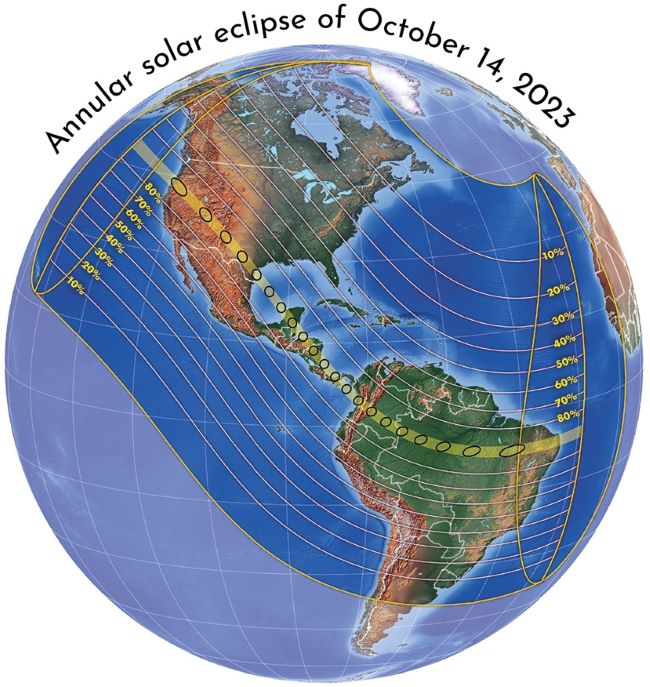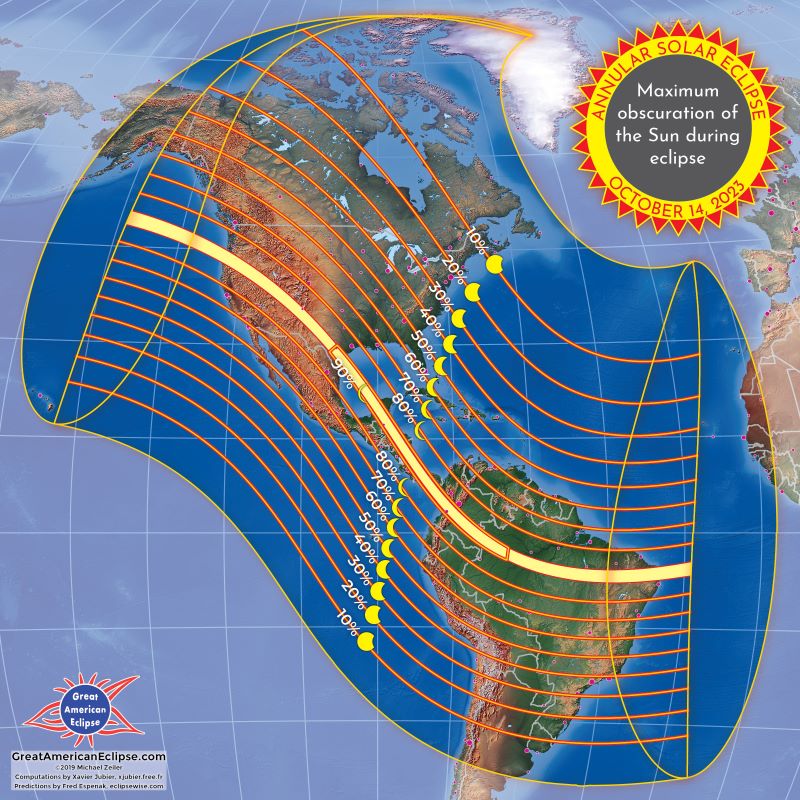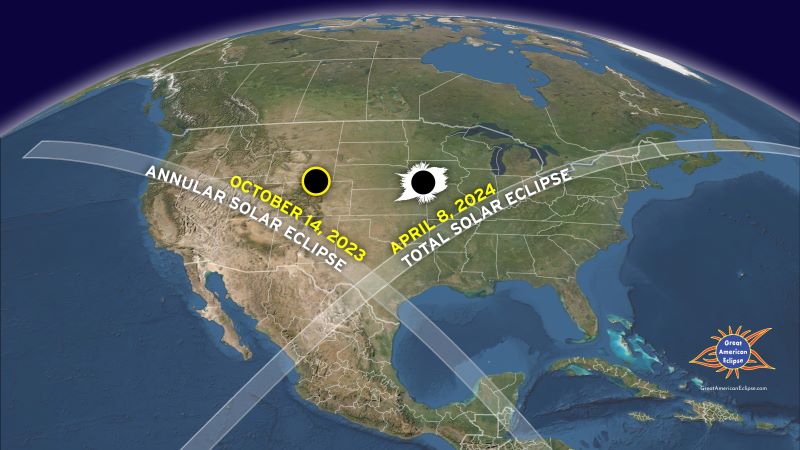On October 14, 2023, Americans will have a real astronomical holiday. Next Saturday, in a large area of the Western Hemisphere of the Earth, eyewitnesses will be able to observe a real annular solar eclipse, known as the “ring of fire”. Unlike a total solar eclipse, when the Moon completely covers the Sun, the annular eclipse occurs when the Moon passes between the Earth and the Sun, but does not completely cover the Sun, resulting in a bright ring.

The elliptical shape of the Moon’s orbit around the Earth makes this phenomenon possible. During certain periods, when our moon is closer to the apogee, the most distant point of its orbit, it appears smaller against the background of the Sun. If the eclipse coincides with this period, the result is a “ring of fire” effect. Conversely, when the Moon is at perigee, the closest point to the Earth, and is exactly on the same level with the Sun, the total eclipse can occur — this is exactly what is expected in April 2024.
Solar eclipse of October 14: Path of the shadow
For residents of the United States and other American countries, the upcoming annular eclipse promises to be a real celestial spectacle. 48 American states, along with Alaska, will see the solar eclipse in one way or another. This event marks the last opportunity to see the annular eclipse over the United States before June 21, 2039.

On October 14, 2023, the path of the annular solar eclipse will begin in the Pacific Ocean, coming ashore in Oregon. Then the shadow’s path will head southeast through Nevada, the Four Corners and Texas. Later, the shadow of the eclipse will cross the Gulf of Mexico, the Yucatan Peninsula, as well as parts of Central America. Finally, the eclipse will move to South America, where it will cross Colombia and Brazil. Thus, in 3 hours and 34 minutes, the antumbral shadow of the Moon will travel a path of 13,800 km long, which covers 0.57% of the Earth’s surface area.

For those who were not lucky enough to be directly in the path of the solar eclipse on October 14, NASA would hold a live broadcast of the event, which could be viewed below.
Solar eclipses in 2023
The first solar eclipse in 2023 occurred on April 20. On that day, the moon’s shadow passed over the eastern Indian and western Pacific Oceans. The maximum duration was 1 minute 16 seconds in the Timor Island area.
Forecast for 2024
The second Great American Eclipse will occur early next year. It will be the total solar eclipse on April 8, 2024.

The 25th solar cycle is ramping up now. This means that more and more spots will appear on the Sun in the coming years. Therefore, any of these safe methods of observing the Sun can allow you to enjoy tracking sunspots in the coming years.


It is important that observers of the solar eclipse be careful. Even during the annular eclipse, powerful solar rays can cause serious and lasting damage to the eyes. It is extremely important never to look directly at the Sun without special glasses for observation or to use indirect methods of observation. NASA has issued safety guidelines to ensure that everyone can enjoy the astronomical spectacle without health risks.
Earlier we talked about the main astronomical events of October 2023.
According to earthsky.org.
Follow us on Twitter to get the most interesting space news in time
https://twitter.com/ust_magazine
